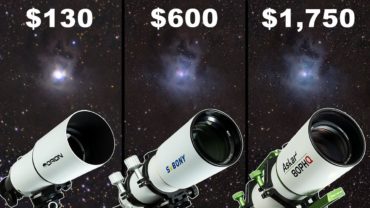Christian Truther “Tidbits” 1 – Analysis of Amateur Photography: 120,000ft-200 Ways To Get It WRONG!
Hello world, Christian Truther here, and I have a new video series for you entitled “tidbits”, where I try to cover a flat earth topic in about two minute. For the time being, we’ll be focusing on a slightly famous video that gives 200 “proofs” the world is not a spinning ball. Due to time constraints, I’ll always be putting links to my evidence and mathematical equations in the description below. Here are my rules, but I’m burning through my own time, so let’s dive right in. The 1st argument in the series states that only space agency imagery shows any curvature and that it’s all CGI, while amatuer video and photography at about 120,000 feet do not show any curvature.
I’ve covered satellites and their imagery in my 2nd and 3rd video in my conclusive 10-part video series, as well as an interview with Brian, a geocartographer with no NASA or other space agency ties, who uses that data without problem, so check out those links. First off, it’s not just space agencies. Also, the premise that they’re all fake CGI is never supported, and I have a problem with that. Now, to the real argument…the video evidence. First off, 120,000 feet is not actually very far…it’s less than 2/3's of the distance across the narrowest part of Rhode Island, the smallest state in the USA, which itself is only a small part of the world as a whole. Professional marathon runners can cover that in about 2 hours on foot. It’s not that far. Secondly, I notice that these videos never seem to talk about their equipment or their settings.

For accuracy, you’d need a camera that isn’t susceptible to barrel or lens distortions and you’d need to account for zoom settings…all things any self-respecting scientist should take into account. Finally, they never tell you what you’d expect to see at this distance. So, let’s break this popular video down. No details in the video or the description on the equipment …there's nothing…
but you can tell it’s not a rectilinear lens (which isn’t available in consumer grade equipment anyway), as there is a uniform flaring upwards at the edges of the screen at all points in the video. See, a center bulge in the lens will bend light away from the middle, as is clearly happening here. Now, as far as what you’d expect to see…on a perfectly round ball, the horizon would be about 427 miles away from the viewer at about 120,000 feet. The width of the shot, at a 35mm standard, is 55 degrees, or in this case, about 391 miles. The bulge would be only about 5 miles, or 1.27% of your screen. That’s a decimal followed by a 0127 for a multiplier for a perfect setup, which this camera clearly is not.
Let the truth set you free. This is Christian Truther, signing out..













